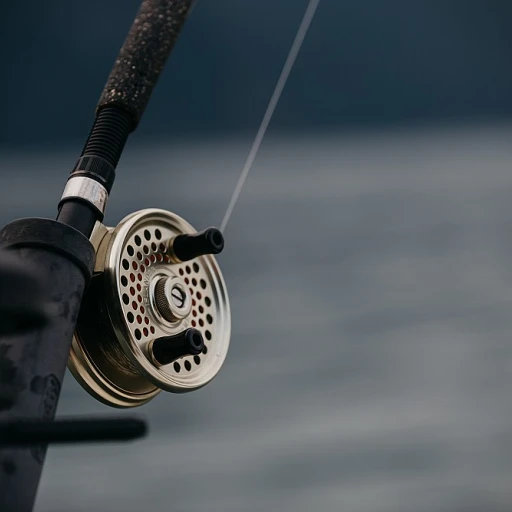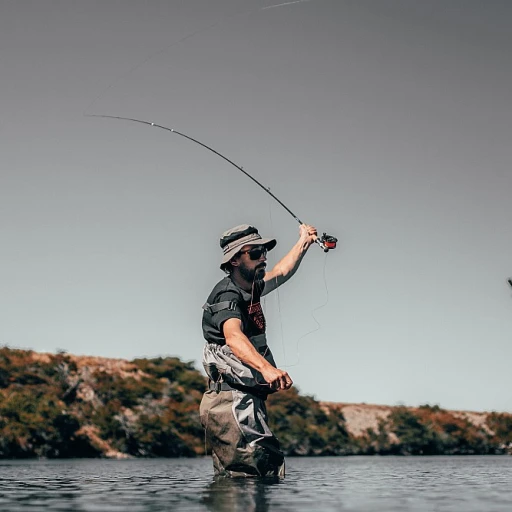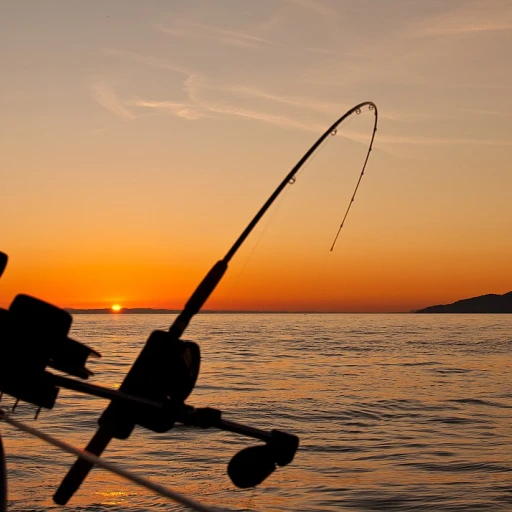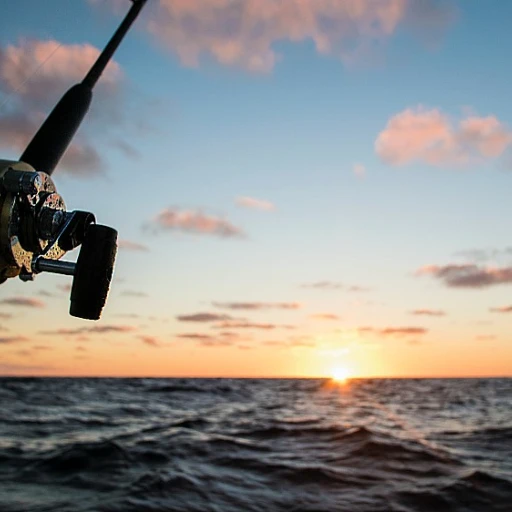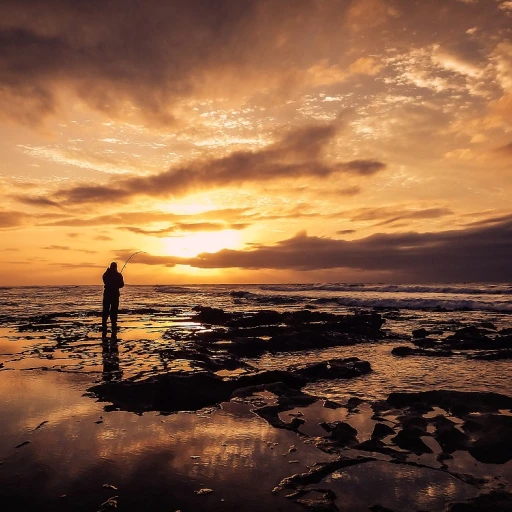
Understanding the different types of fishing lures
Classic spoons: where it all began
When diving into the art of fishing, it’s critical to understand the basics. Spoons are one of the oldest types of fishing lures. Essentially, they're metallic and typically shaped like a spoon, which helps them wobble in the water, mimicking the movement of a distressed baitfish. One popular example of a spoon is the Johnson Silver Minnow. Recognized for its weedless design, it has earned its place among both amateur and professional anglers for its effectiveness in catching various fish species like bass and trout.
Soft plastics: versatile and effective
Once considered a novelty, soft plastic lures have become indispensable. Their flexibility and realistic texture make them irresistible to fish. Brands like Gary Yamamoto’s Senko and Berkley’s PowerBait have transformed fishing experiences. Anglers often rig them using techniques such as the Texas Rig or Carolina Rig. Whether you’re targeting largemouth bass in Florida or panfish and trout, soft plastics should be part of your tackle box.
Spinners and buzzbaits: active and noisy
Spinners and buzzbaits fall into the category of reaction lures. Their design features blades that spin, creating flashes and vibrations. This noise and movement draw the attention of predatory fish. The Panther Martin spinner is a classic example. When fishing in water bodies like Lake Okeechobee, the added noise can be the difference between a biting fish and an empty hook.
The science behind lure colors and their impact on fishing
Why lure colors matter
Anyone who's ever dipped a rod into the water knows the importance of choosing the right best fishing lures. It's not just about shape or size; color can make or break your fishing trip. According to a 2020 research study by the American Chemical Society, certain hues become more visible underwater, depending on light penetration and water clarity.
The biology of fish vision
Fish eyesight differs from humans, so what seems vibrant to us might be inconspicuous to them. For instance, bass have excellent color discrimination in the red-green spectrum but might struggle with blue shades. Dr. Paul Elias, a marine biologist, notes that "fish like largemouth bass are particularly attracted to colors mimicking their natural prey."
Matching lures to water clarity
Here’s the deal: clearer waters call for natural colors like green and brown, mimicking the lake or river's inhabitants. In murkier waters, bright colors like chartreuse or pink shine through. Bryan Thrift, a pro angler with numerous Bass Pro wins, swears by chartreuse when fishing in stained waters. "It's a game-changer," he says.
Seasonal color changes
Throughout the year, water conditions change, influencing color choices. In spring, when many fish spawn, bright colors work well, attracting fish protecting their nests. In summer and fall, as water clarity shifts, angler preferences lean towards more natural tones. Ron Davis, celebrated for his lunker lures, suggests adjusting lure colors seasonally for boosted success.
Case study: Johnson Silver Minnow
Take the Johnson Silver Minnow, a popular spoon lure. Anglers have noted its reflective surface works wonders in all light conditions, making it a top choice for different environments and fish species.
Final thoughts
So, when you're putting together your tackle box, remember: color isn't just a preference—it's key to catching fish. Ready to up your game? Now, let's jump into some of the top lures for bass fishing next.
Top lures for bass fishing
Mastering bass fishing: Top lures to up your game
When it comes to bass fishing, getting the best lures can make all the difference. Bass, particularly the largemouth variety, are fierce fighters and require specialized lures to increase your chances of a successful catch. Let’s dive into some of the top lures that every bass angler should have in their tackle box.
Jigs: The versatile warrior
Jigs are incredibly popular due to their versatility. They can be used in various water conditions – whether it’s deep or shallow, clear or murky. Expert angler Bryan Thrift emphasizes the importance of jigs: “Jigs work well in all seasons, making them a year-round staple for bass fishing.” Pair a jig with a soft plastic trailer like a paddle tail or crawfish imitation to enhance its appeal.
Crankbaits: Covering distance
Crankbaits are designed to cover a lot of water quickly, making them ideal for locating schools of bass. The diving depth varies with different crankbaits, so having a range of them can help you target fish at different water levels. The Bill Lewis Rat Trap is a renowned crankbait synonymous with success in bass fishing. According to Paul Elias, the Rat Trap is “an essential tool when you need to locate fish fast.”
Soft plastics: A must-have
Soft plastic lures, such as the legendary Gary Yamamoto Senko, are indispensable. Their lifelike appearance and movement can trick even the most cautious bass. Soft plastic worms work exceptionally well with the Texas Rig or Carolina Rig setups, offering great flexibility.
Topwater lures: An adrenaline rush
Topwater lures like Zara Spooks provide an adrenaline-pumping experience. When a bass strikes at the surface, it’s a sight to behold. Anglers like Ron Davis swear by topwater lures during the early morning or late evening when bass are actively hunting near the surface.
Special mentions
- Spoons: The classic Johnson Silver Minnow is perfect for snag-free fishing in weedy areas.
- Spinnerbaits: Ideal for mimicking baitfish and triggering aggressive strikes.
- Swimbaits: Large swimbaits can target trophy-sized bass, especially effective in lakes like Lake Okeechobee in Florida.
Remember, the best lure is the one that matches the fishing conditions and bass behavior. Happy fishing, and may your lines always be tight!
Soft plastic lures: versatility and effectiveness
Why soft plastic lures are a go-to for anglers
Soft plastic lures, which often resemble live bait, have become an increasingly popular choice among anglers due to their versatility and lifelike action. This type of lure can be molded into a variety of shapes, each designed to mimic a specific prey fish commonly targeted by predators such as bass and trout.Research has shown that fish are more likely to strike at lures that closely resemble their natural prey. Expert angler Bryan Thrift, known for his success in bass fishing, often relies on soft plastic lures for their adaptability and effectiveness in different water conditions. "Soft plastics are my go-to because they can be fished in various ways – whether it's rigged on a jig head, Texas rig, or Carolina rig," Thrift explains.
The endless options with soft plastics
There are countless varieties of soft plastic lures, including worms, grubs, minnows, crawfish, and creature baits. Each of these can be used to target specific fish species in various fishing environments. For example, a soft plastic worm such as the Zoom Trick Worm can be effectively used in bass fishing, while a soft plastic paddle tail like the Keitech Swing Impact is perfect for mimicking small baitfish to catch predators lurking in deeper waters.
One of the appealing features of soft plastic lures is the array of colors and sizes available. Studies conducted by the Fish and Game Department in Florida have revealed that certain color combinations are more effective in specific water conditions. While darker shades like black or brown work well in murky water, brighter colors like chartreuse or white are more successful in clear, shallow waters.
Durability and realism in soft plastics
Another reason soft plastic lures are favored by anglers is their durability. High-quality soft plastics from brands like Gary Yamamoto and Z-Man can endure repeated strikes without falling apart. This longevity ensures that anglers get more value from their investment. Paul Elias, an accomplished angler, attributes his success during the 1982 Bassmaster Classic to using soft plastic lures, which held up better than other types under the stress of constant casting and strikes.
Moreover, the realistic textures and movements of soft plastic lures can fool even the most cautious fish. The flexible material allows the lures to move naturally in the water, which is particularly effective when targeting fish species like largemouth bass. Combining a lifelike appearance with natural movement creates an irresistible lure that prompts fish to bite.
Trends in soft plastic lure usage
In the past decade, there has been a significant trend towards utilizing biodegradable soft plastics. Companies like Berkley and Biwaa are leading the charge in producing lures that minimize environmental impact without sacrificing performance. These eco-friendly alternatives are gaining traction among environmentally conscious anglers.
By adjusting to the behaviors and preferences of targeted fish species, anglers like Ron Davis advocate for the use of soft plastics in varied conditions. "The key to fishing with soft plastics is to match the hatch – use lures that mimic what fish naturally feed on,” Davis advises.
With options spanning from paddle tails to creature baits, soft plastics are not just a lure but a miniature masterpiece designed to catch fish effectively. Whether you're fishing in Lake Okeechobee or exploring waters in Canada, incorporating soft plastic lures into your tackle box can significantly enhance your fishing success.
For a thorough look into fishing lure types, including the essentials for catfish, you might find this guide to catfish bait tips and tricks particularly insightful.
The role of lure size and weight in fishing success
Getting the right lure size and weight
Size matters, especially when it's about catching that prized fish. Different fish species respond to varying lure sizes and weights, making this a crucial aspect of your fishing setup. Think about how a small jig could be more effective for trout, while a larger, heavier spoon lure might attract a trophy largemouth bass.
Matching the hatch
This concept, often used in fly fishing, can apply to all types of lures. It means using lures that mimic the size and weight of the natural prey in the water you're fishing. Bass anglers often find success with soft plastic crawfish lures that imitate real crawfish size and movement.
Trendy vs. tried and true
Trends might come and go, but some things never go out of style. Take the Johnson Silver Minnow, for example, an iconic lure that continues to catch fish despite being introduced in 1923. Paul Elias, a bass pro, swears by it, stating it's his go-to for heavy vegetation. On the other hand, newer lures like the Z-Man ChatterBait, designed by Ron Davis, offer innovations in vibration and movement, attracting fish in murky waters.
Experts weigh in
Gary Yamamoto, creator of the famous Senko, emphasizes the importance of subtle differences in lure size. He claims that sometimes even a half-inch can make a huge difference in catch rates. Bryan Thrift is known for his obsession with tuning the weight of his Rat L Trap for optimal performance in different fishing conditions.
Case study: Florida bass fishing
On a spring day at Lake Okeechobee, anglers used various lure sizes and weights targeting largemouth bass. Smaller, 3-inch soft plastic lures were successful in shallow waters, while larger, 5-inch paddle tails were effective in deeper areas. The anglers reported an increase in catch rates when precisely tuning their lure setup to the fish's preference.
Personal anecdote: the magic of spoon lures
I recall a fishing trip in Canada where the water was unbelievably clear. Using a classic Panther Martin spoon that weighed just over 1/4 ounce, I managed to hook a monstrous lake trout. That slight adjustment in weight made all the difference in casting distance and depth reach, leading to a memorable catch.
Case studies: successful fishing with specific lures
Paul Elias' record-breaking catch with the Bill Lewis Rat-L-Trap
In 1982, professional angler Paul Elias set a Bass Anglers Sportsman Society (B.A.S.S.) record with an astounding 132-pound, 7-ounce catch at the Bassmaster Classic. His secret weapon? The Bill Lewis Rat-L-Trap. This lure, with its distinctive rattling sound and realistic baitfish appearance, has since earned a legendary status among anglers.
Brian Thrift’s success with the paddle tail
Renowned bass fishing expert Brian Thrift has often praised the effectiveness of paddle tail soft plastic lures. He shared in an interview with Bassmaster Magazine how the subtle vibrations of the paddle tail mimic natural fish movements, making them irresistible to largemouth bass. Thrift’s trust in these lures is evident by his consistent top finishes in FLW tournaments.
Gary Yamamoto's impact with the Senko
No conversation about soft plastic lures is complete without mentioning Gary Yamamoto’s Senko. Launched in 1996, the Senko revolutionized bass fishing with its simplicity and effectiveness. Many anglers, including pros like Bryan Thrift, credit the Senko for their numerous catches. The lure's unique design allows it to wiggle enticingly during the drop, attracting bass from all directions.
Ron Davis’ innovation: The ChatterBait
Invented by Ron Davis, the ChatterBait is a bladed jig that has become a staple in many anglers' tackle boxes. Its unique design allows it to produce a combination of vibration, flash, and action that drives fish crazy. Professional anglers such as Bryan Thrift and Paul Elias have vouched for its effectiveness, particularly in murky water conditions.
Lauri Rapala and the Original Floater
Hailing from Finland, Lauri Rapala crafted what is now known as the Original Floater in 1936. This balsa wood lure is celebrated for its natural wobbling action. The Original Floater's success in catching fish across various species has made it a permanent fixture in tackle boxes worldwide. Professional anglers, including those who compete in bass tournaments, regard it as a must-have.
Exploring popular fishing spots and the best lures to use
Destinations in Florida: Lake Okeechobee
Finding the best lures can be as important as finding the right fishing spot. Lake Okeechobee in Florida is one of those legendary spots where anglers from all over the world gather, all seeking to catch monster bass. The lake, simply known as 'Big O,' is celebrated for its largemouth bass fishing. The top-rated lures used here include the Johnson Silver Minnow, which is praised for its versatility in dense vegetation, and soft plastic lures like the Gary Yamamoto Senko, popular for its effectiveness in catching big bass amidst heavy cover.Panther Martin: A Canadian Treasure
Panther Martin is a name synonymous with success in the cool, sparkling waters of Canada. Trout fishing in these pristine environments is exceptionally rewarding. The Panther Martin spinner lure works wonders here, especially in catching wily trout. Anglers rave about its unique shaft through blade design that delivers unbeatable underwater performance, mimicking the behavior of small fish that larger trout love to chase.Aussie Waters: Best Lures for an Aussie Catch
Australia offers a diverse range of fishing opportunities, from saltwater to freshwater. In Australia's freshwater regions, the Bill Lewis Rat Trap shines. This lipless crankbait is a go-to for Australian anglers targeting predator fish like barramundi and yellowbelly. Its tight wobbling action and loud rattling sound make it irresistible to fast-moving fish in murky conditions.Tokyo's Urban Fishing: Art and Lures Collide
Urban fishing in Tokyo is an experience every angler should try. In the bustling waters of Tokyo Bay, lures like the Zara Spook have made a notable impact. Known for its 'walk-the-dog' action, this topwater lure crafted by Lauri Rapala itself is a darling among Japanese anglers. The Zara Spook is perfect for targeting seabass and other predatory fish, making it a must-have in every tackle box.Expert Testimony: Insights from Bryan Thrift
When it comes to bass fishing in competitive waters like those in Texas, expert Bryan Thrift emphasizes the importance of lure selection. According to him, "Using the right bait can make all the difference on a tough fishing day." He recommends the high-quality lures such as the Bill Lewis Rat Trap and the Lunker Lure for their ability to catch fish in varied water conditions. Thrift's insights are backed by his numerous tournament wins, proving that a keen understanding and choice of lures truly matter.Fishing in Canada: Canada’s Best Lures for Trout
Canada's vast freshwater lakes and rivers are renowned for trout fishing. Anglers here swear by artificial lures, especially spoons and soft plastics. The Johnson Silver Minnow is particularly effective, given its ability to imitate small fish and reflect light in the water. This lure's unique design makes it an excellent choice for catching trout in the Canadian wilderness, where clear waters make fish wary and cautious.Soft Plastic Lures in Finnish Waters
Soft plastic lures, like the ones developed by Gary Yamamoto and Lauri Rapala, excel in Finland's numerous lakes and rivers. Finnish anglers often opt for soft plastics when targeting species such as pike and perch. Paddle tail designs grant these lures an enticing motion that fish can't resist. High quality and long lasting, these soft plastics ensure a consistent and productive fishing experience.Lure Size and Weight Matter in Australia
In Australia, the success of your fishing trip can hinge on something as simple as the size and weight of your lure. Smaller lures often yield more subtle bites in shallower waters or tight spaces, while larger, heavier lures work well in deeper waters. Anglers in Lake Eildon, for instance, often favor the Zara Spook and Petersen's Spoon Lure for their optimal size and weight. This thoughtful selection helps fishermen catch fish more effectively, particularly in challenging conditions.Tips for buying high-quality fishing lures
Check for reputable brands and expert opinions
It's crucial to buy from reputable brands when you're searching for the best lures. High-quality fishing lures designed by brands like Rapala or Bill Lewis have been trusted by anglers for generations. For instance, Paul Elias, a renowned bass fishing expert, swears by Bill Lewis' Rat-L-Trap for its outstanding performance.
Consider the material and build quality
When selecting a lure, take note of the materials used. Soft plastic lures have gained popularity due to their flexibility and realistic movement in the water. Anglers like Gary Yamamoto have designed soft plastic lures that make catching fish species like largemouth bass easier. According to a 2022 study by the American Fisheries Society, soft plastics make up 60% of lures used in bass fishing.
Evaluate the lure's action in the water
The way a lure moves in the water is a game-changer. For instance, paddle tail lures generate a lifelike swimming action that attracts predatory fish. On the other hand, Johnson Silver Minnow spoon lures offer a wobbling effect that mimics prey fish. Consider how different motions appeal to different fish species to make an informed choice.
Look for reviews and testimonials
Check customer reviews and testimonials before making a purchase. Platforms like Amazon host a plethora of reviews from fellow anglers who have tested the product. Bryan Thrift, a professional bass angler, often reads reviews to make informed choices about which baits and tackle to buy.
Check for availability and prices
The availability of certain lures can vary based on your location. For instance, in Florida, lures designed for fishing in Lake Okeechobee might be more readily available. Additionally, look for deals such as free shipping on orders over a certain amount. Many online stores offer these perks to attract customers.
Understand different lure types and their applications
Finally, understand the various types of fishing lures and how they apply to different fishing conditions. From topwater lures like Zara Spooks to deep-diving crankbaits, each serves a unique purpose. Anglers aiming to catch panfish or trout might prefer smaller, more delicate lures, while those targeting largemouth bass opt for larger, more aggressive baits like a lunker lure.



-large-teaser.webp)
-large-teaser.webp)
-large-teaser.webp)

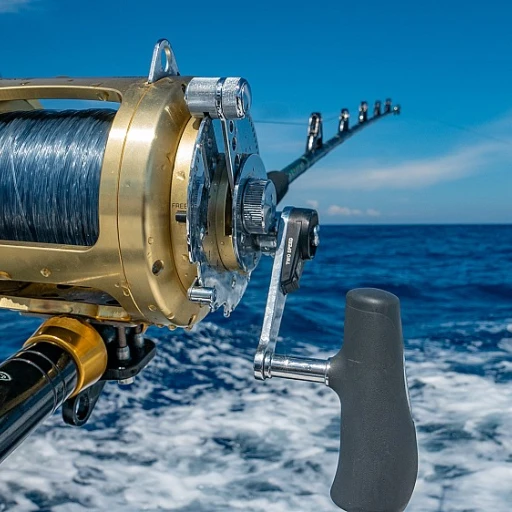
-large-teaser.webp)
